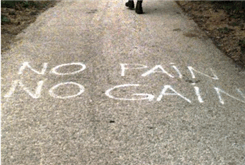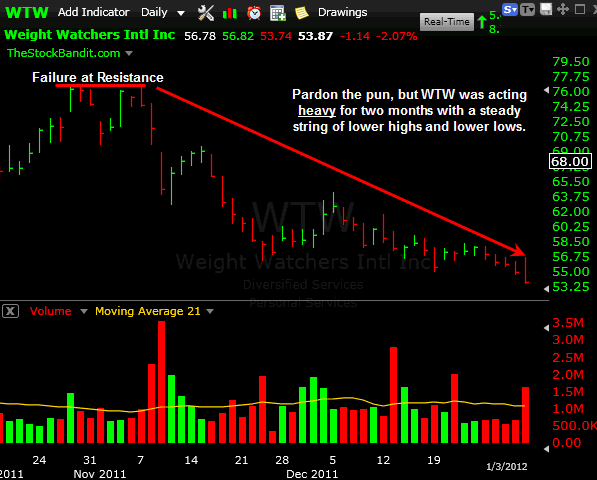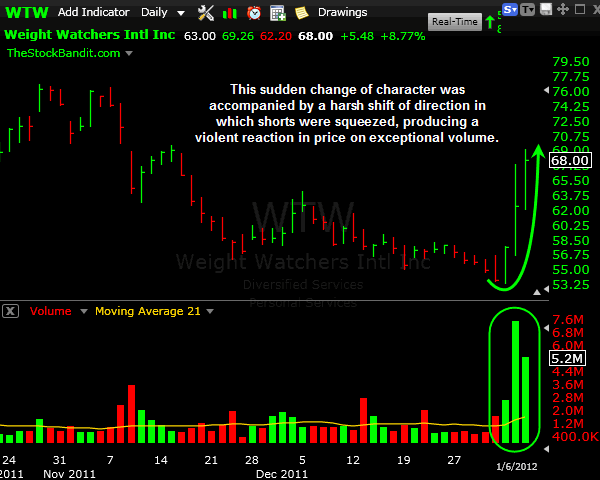 All Entries in the "Trading Psychology" Category
All Entries in the "Trading Psychology" Category
The Zurich Axioms
January 25, 2012 at 12:08 pm
 I first learned about The Zurich Axioms by Max Gunther in the daily Worden Report when Don mentioned it among his favorite trading books a few years ago. Soon after, I picked up a copy and found it was indeed packed with some great insights – enough to be a must-have trading book.
I first learned about The Zurich Axioms by Max Gunther in the daily Worden Report when Don mentioned it among his favorite trading books a few years ago. Soon after, I picked up a copy and found it was indeed packed with some great insights – enough to be a must-have trading book.
There are 12 major axioms highlighted in the book, with a chapter devoted to each, as well as 16 minor axioms. It’s a relatively short book at only about 123 pages, but the “Rules of Risk and Reward Used by Generations of Swiss Bankers” offers no shortage of wisdom and insights for any trader or speculator.
Without disclosing all of the Axioms, I’ll summarize two of my favorites.
Always Play for Meaningful Stakes.
This minor axiom highlights the importance of trading with enough size for it to matter. This goes beyond the learning stages in which a developing trader needs to hone his skills and not fixate on the money. Rather, playing for meaningful stakes is about getting over the fear of getting hurt in such a way that when a play works, it’s well worth the risk taken.
A story is told in the book about the oil tycoon J. Paul Getty, who grew up rich, but once he became an adult he was sent out on his own. Wanting to enter the oil business, he shunned various opportunities to invest $50 in the early 1900’s in favor of betting nearly his entire savings of $500 on an oil lease he felt was more promising. After paydirt was hit, he sold his holdings for $12,000 just a short time later.
Getty mentioned that if he had not struck oil, the $500 would have hurt, but that he could have found a way to save that amount back up again. He was quoted as saying “it seemed to me I had a lot more to win than to lose.” That’s playing for meaningful stakes.
As a trader, it’s not about walking a tightrope where bankruptcy is the result if you slip. It means you don’t nickel-and-dime your way throughout the entire year if you want to get somewhere interesting.
Optimism means expecting the best, but confidence means knowing how you will handle the worst. Never make a move if you are merely optimistic.
What an excellent reminder for traders! Gunther makes the point that without some level of optimism, one cannot trade to begin with. However, there is general optimism and there is specific optimism. According to Gunther, it’s the venture-specific optimism which can become dangerous if you allow it.
The latter mention of what true confidence is just cannot be ignored here. Do you know how you will handle the worst? If you do, then you’ve got arguably the most difficult element of a trading plan already in place – the adverse exit. The ability to fail gracefully in trading – over and over – is what will ultimately define how long you can stay in the game. Your success may eventually be tremendous, but if you’re unable to handle losing the right way, you’ll be taken out long before the big wins can ever come along.
My advice? Pick up a copy of The Zurich Axioms and get a pen ready to mark up the margins and underline key points. It’s a quick read and one you’ll return to often.
Trade Like a Bandit!
Jeff White
Producer of The Bandit Broadcast
Follow TheStockBandit on Twitter or get our free newsletter to keep up!
What it Means to ‘Trade Like A Bandit’
January 11, 2012 at 11:02 am
 I cap off every post and free video with the phrase ‘Trade Like A Bandit!‘ Some get that, others don’t. This post is for the latter group!
I cap off every post and free video with the phrase ‘Trade Like A Bandit!‘ Some get that, others don’t. This post is for the latter group!
While teaching in Dallas recently, an attendee casually said to me prior to my presentation, “TheStockBandit…huh…just like Wall Street?” No. I explained that he couldn’t be more wrong to compare my style or what our trader education business is about to the crooked suits who aim to dupe investors Madoff-style into handing over their money.
The guy had no clue what’s in the name TheStockBandit, so I explained to him that day what it meant. In case some of you don’t get it either, I felt it was appropriate to clarify here as well so that there are no misconceptions of what the name is all about.
Here goes…
Think of the great heist movies…Ocean’s 11, The Italian Job, etc. In them, we see that the best bandits plan the hit extensively. They mock up the situation, review scenarios which may unfold, and determine how they’ll handle them.
Then they execute that plan with total precision, even if it means making some adjustments along the way.
In turn, they get away safely and move on to the next job.
That’s exactly how I like to trade.
I want to plan for what might happen in the trade, and do my homework to locate the best setups (targets) in which to allocate capital. Then I need to have the discipline to execute that plan, stay objective throughout, and make any logical adjustments along the way in order to protect myself and my profits as the trade progresses. That allows me to get away (exit the trade) and then shift my attention to the next opportunity.
It’s a blend of survival and protection. I’m ensuring that when a trade goes wrong, I don’t have to surrender any more than is absolutely necessary…I simply abort (stop out). It allows me to survive, to stay flexible, and to maneuver again when an opportunity arises. And when I’m right, I’m capturing those gains and then shifting to the next play.
The word ‘Bandit’ has a negative connotation to some, but that isn’t the case here. I’m not ‘the stock magician’ fooling people with smoke and mirrors, or ‘the stock thief’ pulling the wool over people’s eyes in order to take advantage of anyone. I’m not out to con anyone – I just want to make great trades. Like a Bandit – because it works. Come trade with us and see what I mean.
Trade Like a Bandit!
Jeff White
Producer of The Bandit Broadcast
Follow TheStockBandit on Twitter or get our free newsletter to keep up!
3 Ways to Grow from Trading Adversity
January 10, 2012 at 10:20 am
Dean Karnazes runs like a man possessed. He’s an ultramarathoner, which means he goes beyond marathon distances – sometimes a lot farther. He once ran 50 marathons in 50 states in 50 consecutive days. Apparently, the dude loves pain.
In his book Confessions of an All-Night Runner, he makes the following statement:
“Struggling and suffering are the essence of a life worth living. If you’re not pushing yourself beyond the comfort zone, if you’re not demanding more from yourself – expanding and learning as you go – you’re choosing a numb existence. You’re denying yourself an extraordinary trip.”
So, this being a trading blog, it begs the question: how well do you embrace the struggle of trading? At times it’s really smooth, and trading can provide extraordinary profits in incredibly brief amounts of time, but not always. Sometimes trading’s a real grind. You question everything you’re doing, your results offer you no condolences, and you’re just flat-out suffering.
 If you’ve been through that before and you’re still a trader, congratulations! You have been able to overcome the pain and doubt and press on and work your way out of it. Others of you, however, might be facing that right now for the first time and you’re wondering if you have what it takes.
If you’ve been through that before and you’re still a trader, congratulations! You have been able to overcome the pain and doubt and press on and work your way out of it. Others of you, however, might be facing that right now for the first time and you’re wondering if you have what it takes.
Here’s the thing…if you fall into the latter camp, this is where the rubber meets the road. You’re facing a choice of whether to persevere or to walk away. While moving forward might or might not deliver the success you so badly want, I can guarantee you that permanently walking away will never allow you to reach your trading goals.
Struggle, Suffering, and Success
Struggling and suffering in trading are common side effects of the job, they come with the territory. As you well know, if it were easy then everyone would be doing it. Trading can be hard, it can be demanding, and boy can it be frustrating.
That same struggle can also propel you to new heights of success, but you have to respond the right way – and it’s not gonna be comfortable.
3 Ways to Grow from Trading Adversity:
1. Appreciate the ache. It doesn’t mean you enjoy the frustration. Appreciating it means you acknowledge it’s here, you recognize the fact that a change is needed, and you understand that if you don’t shift in some way it’ll be the end of your trading – at least for a while.
2. Expect to grow. Why shouldn’t you? What you’re doing isn’t working, as otherwise you wouldn’t be facing adversity to begin with. Watch for new kinds of moves, implement some different techniques, and anticipate some different results. If you survive, you’re going to be a better trader because of this time and how you respond to it.
3. Require more from yourself. Maybe you got stagnant, and that’s what brought you to this point of frustration. You’ve had some approaches which have worked, and you rested on them – perhaps a little too much. As traders, we have to continually blend a loyalty to what’s working now with a willingness to employ some new methods. So push yourself more going forward, keep moving, never sit idle when it comes to growing as a trader.
And finally, for some of you this is a wake-up call. You’re starting to become set in your ways, but you now recognize you’re in for a rude surprise if you continue to operate in that manner. No more! Seek out ways to improve, to grow, to add to your skill set. Because according to Dean, getting stuck in your comfort zone means you’re denying yourself something extraordinary – maybe even that elusive next level.
Trade Like a Bandit!
Jeff White
Producer of The Bandit Broadcast
Follow TheStockBandit on Twitter or get our free newsletter to keep up!
Portrait of a Short Squeeze
January 9, 2012 at 10:47 am
WTW was in a clear downtrend. The stock had failed in early-November to clear late-October resistance, and subsequently reversed lower. Each bounce was sold since then, with a series of lower highs and lower lows.

Last week, the stock broke to a new correction low by undercutting the December lows on heavy volume. What followed, however, was obviously both shocking and painful for the shorts.
Wednesday’s arrival delivered upbeat news for Weight Watchers as U.S. News & World Report put it at the top of the list for best weight loss diets in 2012. Consequently, Wednesday’s bar was a bullish engulfing bar as Tuesday’s low was undercut before a close above Tuesday’s high on even heavier volume with a 7% pop. Then we saw near-record volume Thursday on an 8% advance, and further upside continuation Friday with nearly a 9% gain.

Change of character? Absolutely. Value-buyer accumulation? Hardly. This is the portrait of a short squeeze, and it’s one reason shorts require absolute stop losses. The sudden shift can rip the faces off of shorts who panic and rush for the exits while opportunistic bulls get long. The combination can be explosive, as seen here in WTW.
The lesson? Watch your shorts and don’t give them more leeway than they deserve. Keep stops in place and be mindful of what’s possible when the tide shifts. This is one kind of move you don’t ever want to experience from the wrong side of the trade!
Trade Like a Bandit!
Jeff White
Producer of The Bandit Broadcast
Follow TheStockBandit on Twitter or get our free newsletter to keep up!
A Look Through the Goal Posts
January 1, 2012 at 3:31 pm
 It’s that time again…time to reflect on the previous year, see what you can learn from it, and then determine how to apply it in the year ahead.
It’s that time again…time to reflect on the previous year, see what you can learn from it, and then determine how to apply it in the year ahead.
I’ve talked quite a bit about goals here, so rather than reinvent the wheel, I’m going to review goals posts from the past. Get your clicker ready and hit the links at will!
Trading shouldn’t be everything, so have some off-the-screen goals to go alongside your account-related objectives.
If you go about it the wrong way, goals can actually impede progress, but done correctly they can provide big incentive and some satisfaction.
Your dedication and preparation in the year ahead can deliver impressive results, but keep in mind that making big progress in trading requires patience. It’s a process, so it’s all about making good trades and trusting that the results you want will be there.
Stay in the game and believe that the opportunities will be there if you’re around to identify them. You’ll need to take these 5 steps to reach your goals, but a year from now just imagine the difference it could mean to your trading.
Know where you’ve come from, yes, but also where you’re going. So say what you will about goals, but I think they are a must.
Trade Like a Bandit!
Jeff White
Producer of The Bandit Broadcast
Follow TheStockBandit on Twitter or get our free newsletter to keep up!
A Trader’s 5-Step Recovery
December 7, 2011 at 9:03 am
re-cov-er-y (noun) – the regaining of something lost or taken away; restoration to a former or better condition; the extraction of useful substances from waste.
Traders have to go through recovery on almost an ongoing basis. Sometimes it’s from a paper-cut-sized hit to the account, while other times it involves coming back from an amputation of sorts – whether it be a major drawdown to actual or emotional capital.
 Either way, without the ability to recover, you’re done. (Obvious alert: that’s no place to be).
Either way, without the ability to recover, you’re done. (Obvious alert: that’s no place to be).
There are steps to recovery which should be taken, and I want to discuss some of them. By no means is this an exhaustive list, so please add your own in the comments, but here are a few which I think are necessary on the (sometimes long) road back.
Admit it. Face up to what it is. Call it a slump, call it shattered confidence, call it a big scary market monster. Whatever “it” is, you have to get it on the table so you can deal with it.
Seek help. Maybe you shouldn’t go it alone. Without some accountability, it’s easy to relapse. Find a mentor or some coaching to get you back on track, and add some skills to your repertoire. The fact of the matter is that left to your own abilities as they currently stand, you may very well be facing a similar situation again.
Take inventory. Take an inventory of what’s left of your capital, both in terms of cash and confidence. It may be that you simply don’t have enough left to consider a comeback right away, so perhaps you incubate for awhile and prepare in other ways for your eventual return. Or perhaps you assess your situation and realize you have more than enough to start the process.
Get uncomfortably familiar with the cause. What was it that put you in need of recovery to begin with? Overconfidence? Lack of respect for the market? A series of small mistakes which compounded your problems? Understanding the root cause of your wounds, even if painful, will help you prevent it from happening again in the future. After all, you’ve already paid the tuition, you might as well get the lesson.
Get back in the saddle. The last step in the sequence is to return to trading and begin rebuilding. Start thinking about what that’s going to look like for you and how you’ll avoid the same pitfalls which got you this time around. Visualize yourself back in the routine again, making plays, staying disciplined, and having success.
** What are some steps you think are necessary to begin the healing process following a big trading loss?
Trade Like a Bandit!
Jeff White
Producer of The Bandit Broadcast
Follow TheStockBandit on Twitter or get our free newsletter to keep up!
Don’t Be a Monkey
November 17, 2011 at 10:20 am
 Ever seen those monkey traps where they put some bait in a trap, a monkey comes along, sticks its hand through the hole to get the bait, but when making a fist, can’t remove its hand from the trap?
Ever seen those monkey traps where they put some bait in a trap, a monkey comes along, sticks its hand through the hole to get the bait, but when making a fist, can’t remove its hand from the trap?
They have to drop the bait in order to escape the trap, but their greed and ignorance prevents them from letting go?
I’ve made some trades in that same manner, and I’m guessing you have too. The ones where I just refused to let go in time because I wanted it to work so badly, and ultimately they proved extra costly.
Dropping the “bait” in those cases would have freed me to go in search of many other, better opportunities, but my short-sightedness prevented it.
Monkey Brained
And while every single one of us has been there at some point in our trading, what’s curious is that it originates not with the setup or a poor strategy or a flawed technique for entering or exiting. It starts with not having a properly prepared mind.
It’s a flaw with our pattern of thinking.
At times it’s based on a fear of scarcity, whereby we stay with a mediocre or poor trade because there’s nothing else on the radar. In effect, we’re bored, in which case we shouldn’t be trading anyway. Listen to the charts!
Other times it’s that our pride is too much on the line and we’re more interested in defending that than our capital. That prevents us from moving on to a truly worthwhile trade, thus keeping us trapped.
Remember the Goal
I’ve talked at length previously about trading as a numbers game, but it’s such a fundamental viewpoint to have as a trader – something we just can’t lose sight of.
Over time, we want lots of at-bats to let our edge play out. When sifting through setups we select actual trades based on probabilities. That’s the aim.
And on any given trade, if we’re keeping that in mind, we’re willing to let go when the feedback we’re getting doesn’t support our original expectation for the play. The price action is weak, a key level fails to hold, or a reversal of direction has begun and the charts are telling you to shut it down – yet you aren’t listening.
Stay on track. Keep the bigger picture in mind. Be willing to lose in this one trade if you need to, so that over the next dozen or hundred or thousand trades you can be profitable.
… In other words, Trade Like A Bandit – not a monkey!
Jeff White
Producer of The Bandit Broadcast
Follow TheStockBandit on Twitter or get our free newsletter to keep up!





